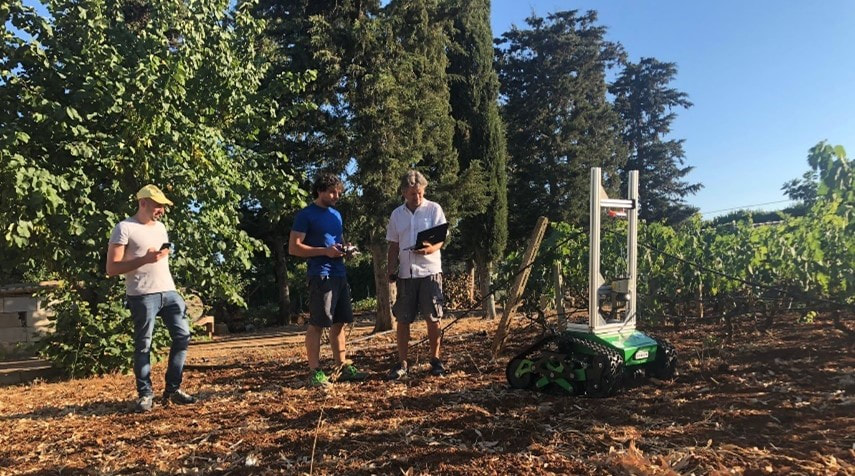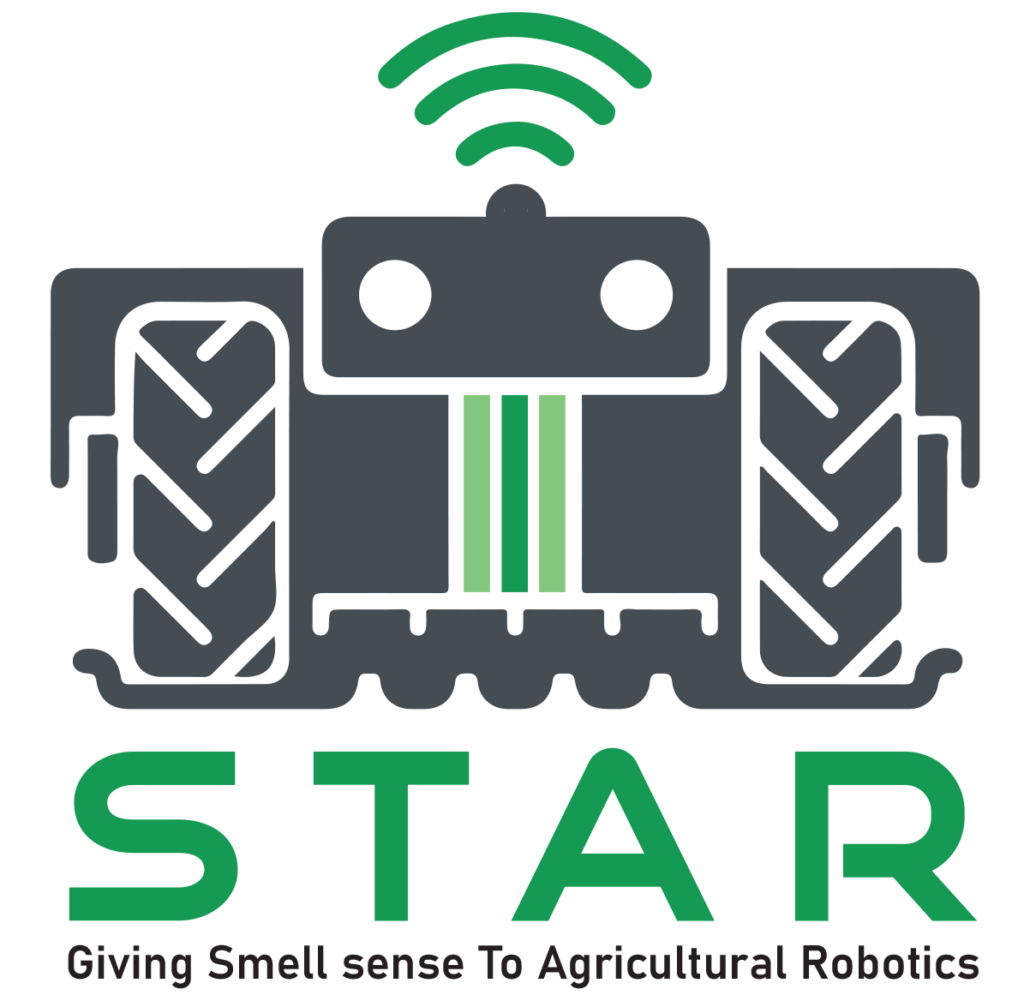The overall goal of STAR project is the development and implementation of multi-sensor systems and sensor processing algorithms to enable agri-robots to perform fruit freshness level monitoring and reduce food waste throughout the supply chain, and precision agriculture tasks, such as precise local application of pesticides/fertilizers and yield estimation. The envisaged idea is based on an integrated sensor network, including mobile gas sensors mounted on board of ground robots. Information coming from the fixed sensing devices will flag “attention spots” in the crop for further local investigation by the robotic platforms.
This approach will lead to in-field high-throughput crop assessment, and this narrow temporal and spatial scale of detection ability can enable precision farming applications that rely on accurate high-resolution local maps, i.e.:
Controlled traffic farming. Automated online estimation of key parameters of the terrain that affect its ability to support vehicular traffic (e.g., soil compaction, friction, longitudinal and lateral grade, etc.). Such properties are collectively called “trafficability.” Measuring real-time terrain properties makes it possible for a vehicle to adapt to the site-specific environment by varying its velocity and suspension system configuration or tire pressure and adjusting the parameters of onboard control and stability systems. This would also contribute to increasing the safety of agri-bots during operations.

Furthermore, the technology developed in STAR will make robotics accessible to traditional farming environments, making farming more attractive for the young and tech-affine generation, and thus counteracting the emerging shortage of young, skilled workers.

Project coordinator
Prof. Reina – Polytechnic University of Bari, Italy
Partners
Polytechnic University of Bari, Italy
Todos Technologies Ltd, Todos, Israel
Fraunhofer Institute for Intelligent Analysis and Information Systems IAIS, Germany

This project has received funding from the European Union’s Horizon 2020 research and innovation programme under grant agreement no 45207 ERA-NET COFUND
ICT-AGRI-FOOD.
![]()